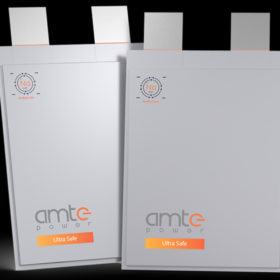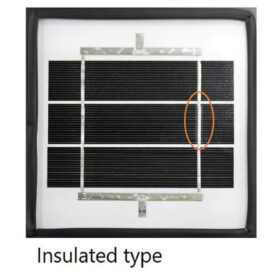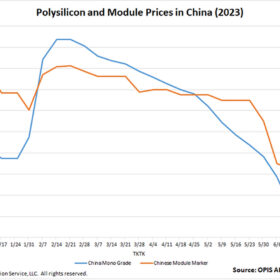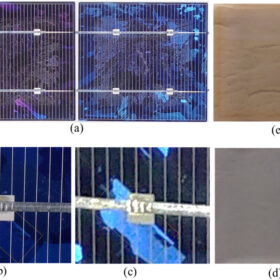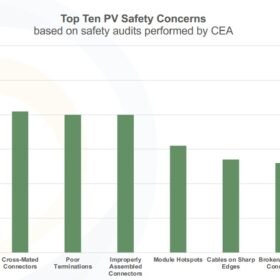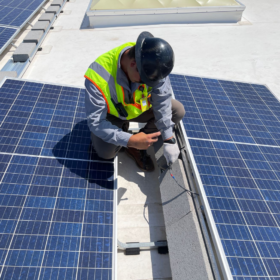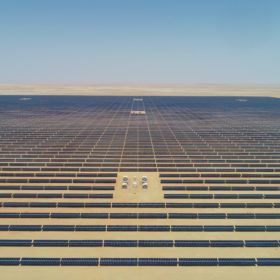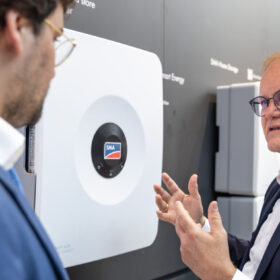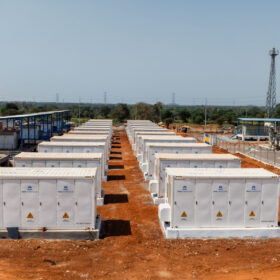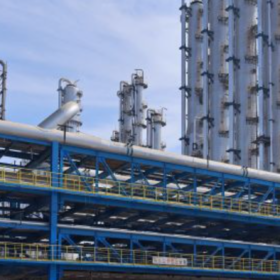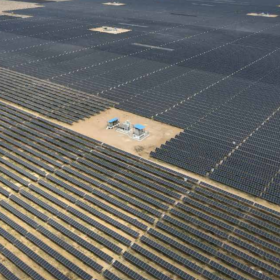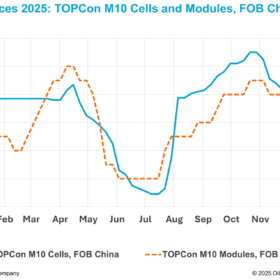Global sodium-ion battery market expected to reach $2.6 billion by 2028
The global sodium-ion battery market will grow at 16.2% annually to touch $2.6 billion by 2028. Major drivers include an increasing demand for these batteries as a lithium battery replacement for renewable energy storage and the growing trend towards low-speed electric cars.
New technique to repair solder interconnection failures in solar panels
Researchers in Japan have developed a repair technique for solar modules with damaged busbars and solder ribbons. They claim the new method can be implemented on site, without removing the panels from the array.
China solar module prices keep diving
In a new weekly update for pv magazine, OPIS, a Dow Jones company, provides a quick look at the main price trends in the global PV industry.
‘Oversupply is a natural challenge to our industry,’ says Trina Solar official
Helena Li, president of Trina Solar’s global cell and module business, spoke to pv magazine at the recent SNEC trade show in Shanghai about the PV industry’s oversupply challenge. Li said the company is considering opening a factory in Europe and expressed optimism about future cost and price declines.
Keep your solar cells dry
Scientists in Norway used various imaging and characterization techniques to analyze the cells and other components of silicon PV modules that had been installed in the field for more than 10 years. The group’s aim was to isolate the role of moisture in various mechanisms that cause performance loss over time, and to understand how these mechanisms progress over long-term installation in real outdoor conditions.
CEA identifies major safety concerns in 97% of audited rooftop PV systems
Clean Energy Associates (CEA) has performed a safety audit on more than 600 rooftop PV systems and has found that 97% of installations have major safety concerns. It says that 49% of sites have grounding issues, 47% have damaged modules, and 41% have cross-mated connectors.
Ten most common rooftop solar safety risks
Clean Energy Associates found a myriad of problems at solar installations around the world, noting that because most are caused by poor installation practices, many can be identified and resolved relatively easily before they lead to fires, safety risks and potentially costly liabilities.
Sterling and Wilson Renewable Energy reports strong order inflow in FY 2023
The solar and energy storage EPC provider is planning to collaborate with competent agencies for support towards development of robotic system for module cleaning, suiting to the company’s in-house designs.
SMA unveils hybrid inverters for residential applications
SMA’s new one-phase hybrid inverters have efficiency ratings of up to 97.5% and European efficiency ratings of 96.8%. They are available in four versions, with power outputs ranging from 3.6 kW to 6 kW.
IEA-PVPS releases global benchmark for solar irradiance data
IEA-PVPS has published a report to help the solar industry to choose appropriate surface radiation models and data providers based on location and application requirements.
